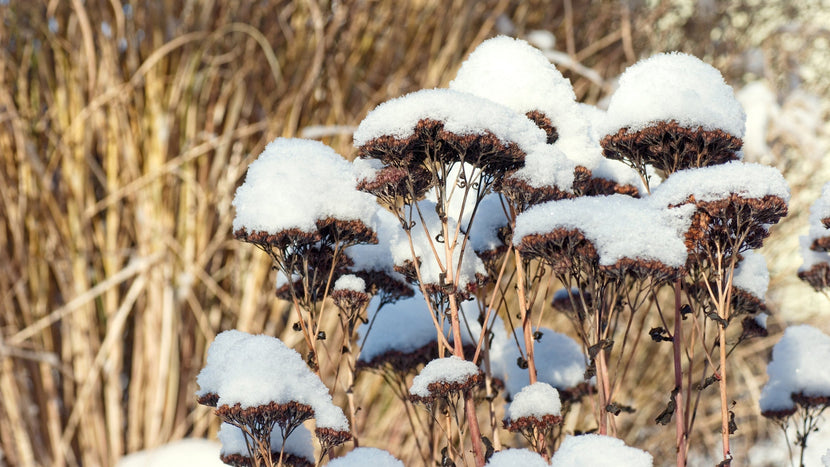
The Importance of Dormancy to Plants: How Fall & Winter Planting Benefits Your Garden
Dormancy is a crucial phase in the life cycle of many plants, particularly in temperate climates, where cold winters provide an essential period of rest. During dormancy, plants slow down their metabolic processes, conserving energy and preparing for the upcoming growing season.
This rest period allows plants to survive harsh winter conditions and thrive when warmer weather returns. Whether you're planting trees, shrubs, or perennials, understanding the role of dormancy can help you better care for your garden, especially when planting in the fall and winter.

Vernalization and Dormancy: Preparing for Spring Growth
A significant benefit of dormancy is a process called vernalization, where exposure to cold temperatures is necessary to trigger flowering and fruiting in certain plants. Many bulbs, perennials, and fruit trees rely on vernalization to break dormancy and begin vigorous spring growth.
By planting in the fall, you're giving your plants the opportunity to experience a natural cooling period, ensuring they bloom and produce fruit when spring arrives. Plants such as tulips, daffodils, and certain fruit trees need this cold exposure to complete their life cycle successfully.

Planting Dormant Plants in Fall and Winter
Planting dormant plants in the fall and winter is an excellent way to establish strong root systems while avoiding the stress of summer heat. When you plant during these cooler months, the ground is still warm enough to encourage root growth, even though the plant's top growth has stopped.
For trees and shrubs, this is the ideal time to plant because the roots have time to acclimate and grow without the added burden of supporting active foliage. Be sure to mulch around the base of the plant to insulate the roots and maintain consistent moisture levels, which is critical during the dormant period.
When planting dormant plants, water them well after planting and monitor the soil moisture throughout the winter. While the plant is not actively growing, the roots still need water to stay healthy.
However, overwatering can lead to root rot, so check that the soil is well-drained. As spring approaches, you’ll see the benefits of planting in the fall or winter as your plants break dormancy, encouraged by their strong root systems and vernalization, ready to burst into life.

Caring for Dormant Plants
While dormant plants don’t require as much attention as actively growing ones, they still need basic care to ensure they survive the winter. Once your plants are in the ground, mulch around their base to provide insulation against cold temperatures and to retain moisture.
Be mindful of watering—dormant plants need water, but less frequently than they would during the growing season. Monitor the weather; during extended dry periods, even in winter, it’s essential to give them a drink.
Conclusion
The key takeaway is that dormancy is a natural and essential process for many plants. By planting in the fall or winter, you allow plants to establish themselves in a stress-free environment, and with vernalization, you can ensure healthy growth and beautiful blooms in the spring.
Embrace the dormancy period as an opportunity to give your plants the best start possible, and your garden will thank you with vibrant growth and abundant flowers when the growing season returns.
